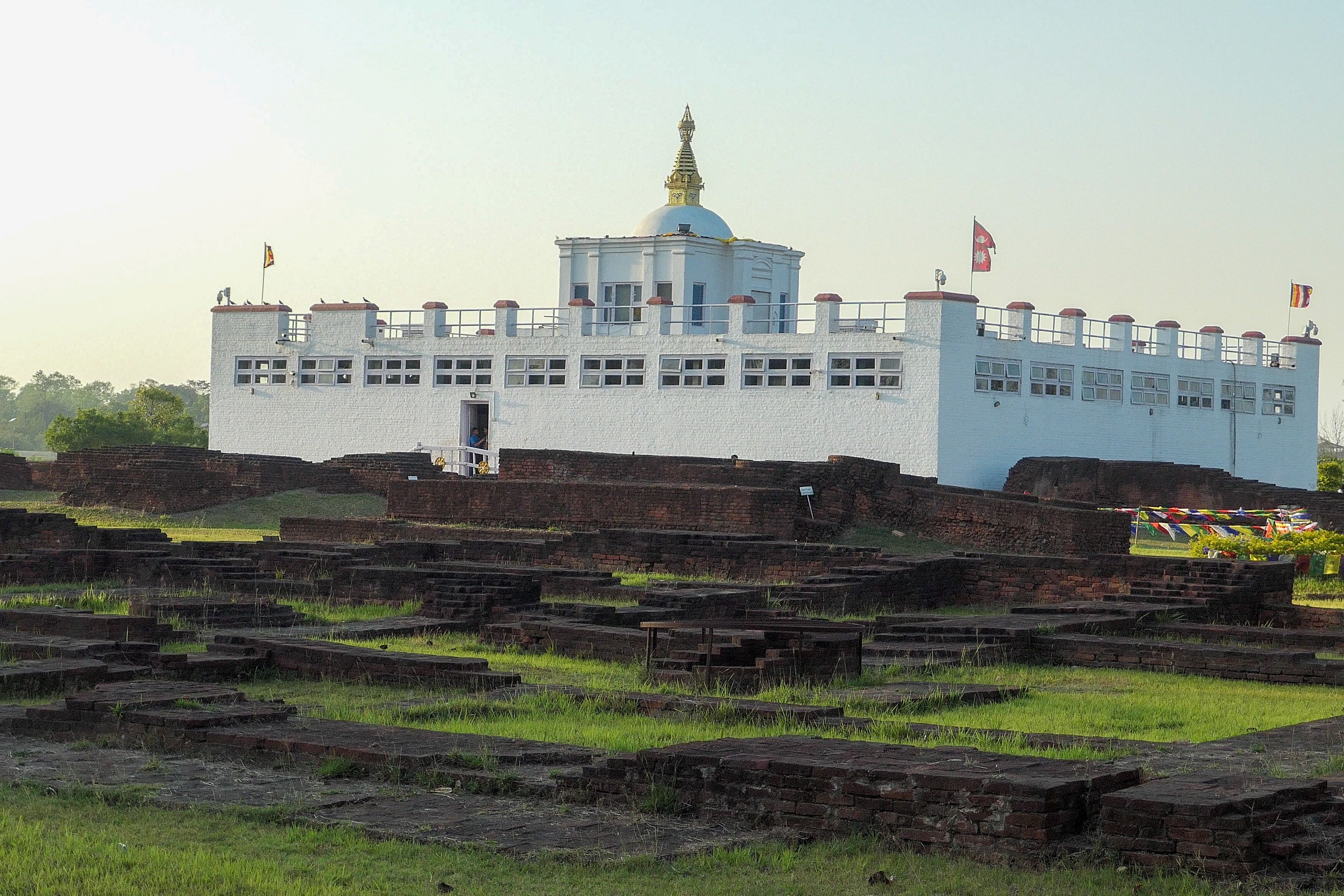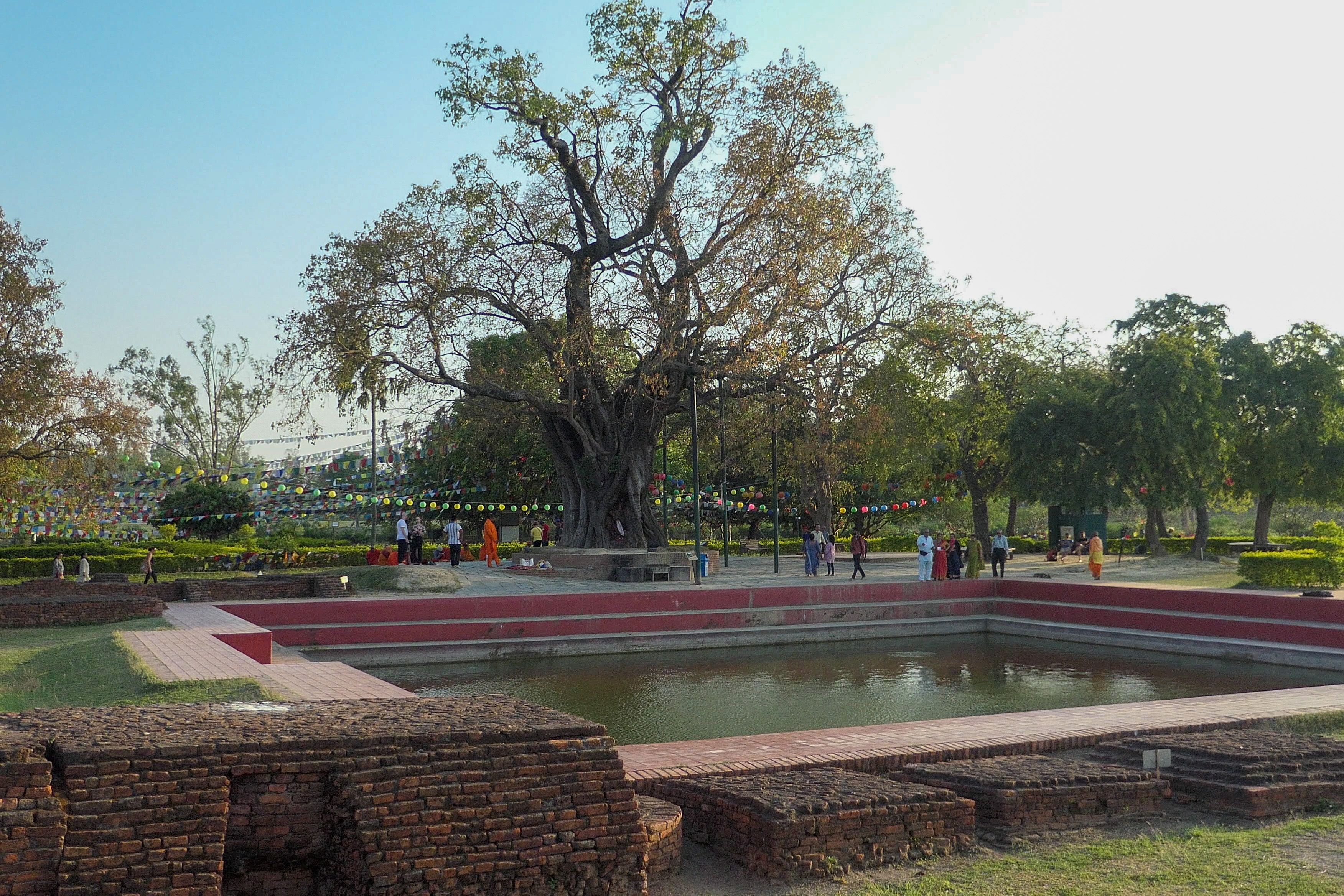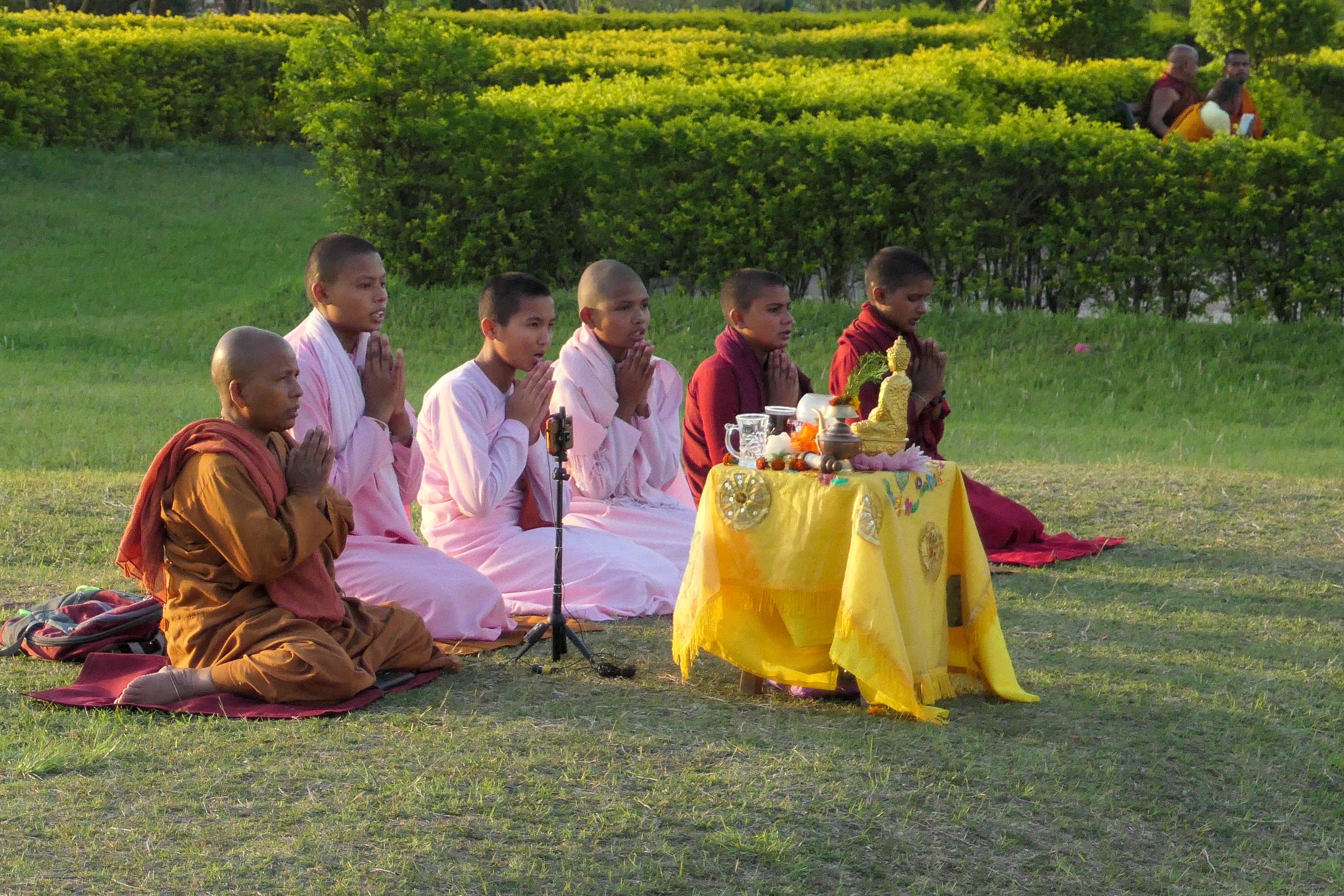Urgency & Dismay
Tuesday, 4 April 2023
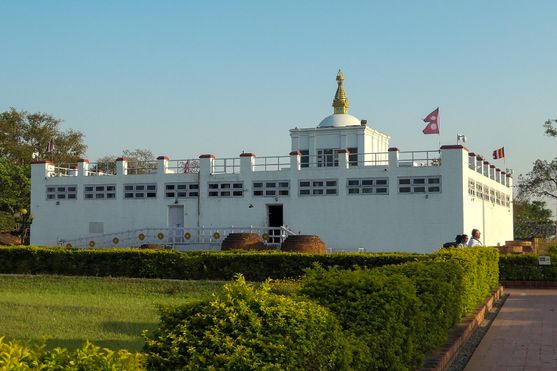
“Ānanda, there are these four places that merit being seen by a clansman with conviction, that merit his feelings of urgency & dismay. Which four? ‘Here the Tathāgata was born’ is a place that merits being seen by a clansman with conviction, that merits his feelings of urgency & dismay. ‘Here the Tathāgata awakened to the unexcelled right self-awakening’.… ‘Here the Tathāgata set rolling the unexcelled wheel of Dhamma’.… ‘Here the Tathāgata totally unbound in the property of unbinding with no fuel remaining’ is a place that merits being seen by a clansman with conviction, that merits his feelings of urgency & dismay.” Mahā Parinibbāna Sutta, chapter 5
1. Lumbini
On the second day of the Buddhist leg of our Indian trip, we arrived in Lumbini in Nepal. I’ve rarely crossed an international border except in an airport — or in the European Union. (I have dim memories of driving through the Alps with Robert maybe twenty-five years ago and insisting that the Italian border officials stamp my passport as a souvenir.) This time, we had to visit two very rundown offices, one in India and one in Nepal, where the entire process was mediated through ancient malfunctioning computer equipment. And I think the driver may have had to bribe an angry guy. But we made it. A day trip to Nepal, back to India the next day.
Lumbini is one of the four major pilgrimage sites that the Buddha tells Ānanda about in the sutta quoted above. It’s ‘Here the Tathāgata was born’. I had seen images and video of the site before. But a lot of money has gone into the site over the past few years, and so it’s no longer the dustbowl I had been expecting. In fact, it’s been transformed into a beautiful garden.
Like most major religious figures, the Buddha had a fairly remarkable birth.
From the solid earth sprung beautiful lotuses, the nature of vajra. They appeared auspiciously where the Guide placed his wheel-marked feet.
He took seven steps and spoke with a melodious voice like Brahmā’s:
“I will be a perfect being, a sublime physician who cures old age and death!” Lalitavistara Sūtra, chapter 7
The Buddha’s mother Māyā was travelling from her home to her father’s home for the birth, carried on a palanquin. She stopped to take a walk in the shade of a sal tree. She gave birth holding on to one of its branches, and the baby “emerged from his mother’s right side, fully aware and mindful”. He took seven steps, and a lotus bloomed from each of his footfalls. He pointed at the sky and said his first words.
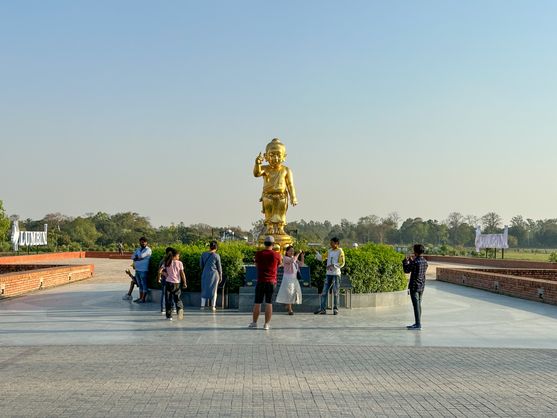
The place where the Buddha was born is marked by a tree, a pond, and an unimpressive low brick building painted white, with casement windows along each wall. There’s a square parapet on top. It merely exists to shelter the main attraction: the remains of a temple built by King Ashoka, who visited and adorned the Buddhist pilgrimage sites in the third century BCE, and who is credited with the spread of Buddhism beyond the region where the Buddha lived and taught.
In fact, it’s because of Ashoka that this place is confidently identified as Lumbini. In front of the white building is a three-metre pillar, carved out of a single stone, with an inscription in the Brahmi script, saying that this spot is Buddha Shakyamuni’s birthplace, that Ashoka made and erected the pillar, and that he freed the village of Lumbini from its taxes, or at least from most of them. The pillar had been known of for years, but the inscription was only rediscovered in 1896.

Before going to the site, we spent a couple of hours being driven around the area to the north in a tuk-tuk. There’s a lot of construction going on, and the drive was very rough, but it’s going to be a lot easier to visit in a few years’ time. The whole area is full of temples, including one constructed by Nepalese Buddhists, but there are Thai temples, Lao, Japanese, Burmese, Tibetan — even French and German temples. It’s a UNESCO World Heritage Site, a “site of cultural and natural heritage […] considered to be of outstanding value to humanity”.
4. Kushinagara
Then the Blessed One, emerging from the cessation of perception & feeling, entered the dimension of neither perception nor non-perception. Emerging from that, he entered the dimension of nothingness… the dimension of the infinitude of consciousness… the dimension of the infinitude of space… the fourth jhāna… the third… the second… the first jhāna. Emerging from the first jhāna he entered the second… the third… the fourth jhāna. Emerging from the fourth jhāna, he immediately totally unbound. Mahā Parinibbāna Sutta, chapter 6
The Mahā Parinibbāna Sutta tells the story of the Buddha’s parinibbāna, his Total Unbinding, which took place here in Kushinigar when he was eighty years old. There are several sites connected to this event.

The first one we visited contained the remains of a massive stupa — a burial mound faced in stone or brick — the site where the Buddha’s body was cremated, built over some of his ashes.

The second was a temple constructed during the Gupta period (between the fourth and seventh centuries CE), which contains an ancient statue of the Buddha reclining, carved from a single block of red sandstone (since broken into three pieces somehow and covered in gold foil by worshippers). Our guide encouraged us to look at the statue from different angles: looking along from the feet, he said, it looks like a dead body, from the top it looks like the Buddha is deep in contemplation, and from beside his face you can just discern a satisfied smile.
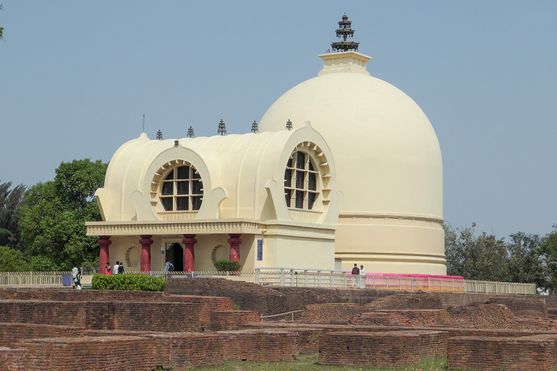
Behind the temple is a tall hemispherical stupa, built originally by King Ashoka in the third century BCE. Both the temple and the stupa were renovated extensively during the time of Nehru. They are surrounded by the ruins of monasteries.
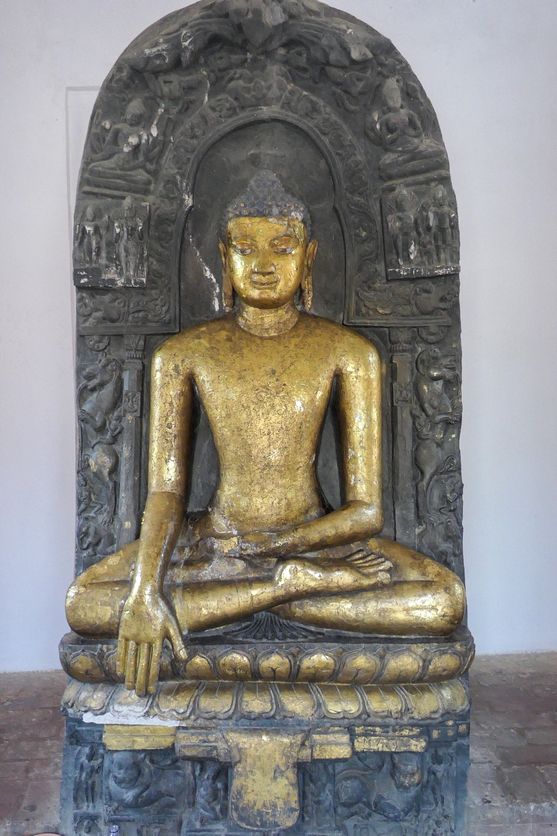
And finally, across the road is the Matha Kuar Shrine. A small temple, containing a three-metre golden Buddha, marking the source of the Buddha’s last drink of water before his Total Unbinding. It’s adjacent to the usual ruined monastery.
Calvin and I were the only foreigners here. At Lumbini, there were monks sitting around the sal tree — we even had a hilarious chat with one of them. (He gave us his card.) There were young people prostrating themselves before the stone that marks the exact site of the Buddha’s birth. And there was a small group of devotees chanting melodiously outside the temple. But at Kushinagar, all of the visitors were local, and only one young man kissed his hand and touched the foot of the reclining Buddha.
Anyway, we’re tired, and both a bit run down from a persistent cough which is probably not Covid. So we’ve retired early to our hotel room for a break and a nap before dinner.
